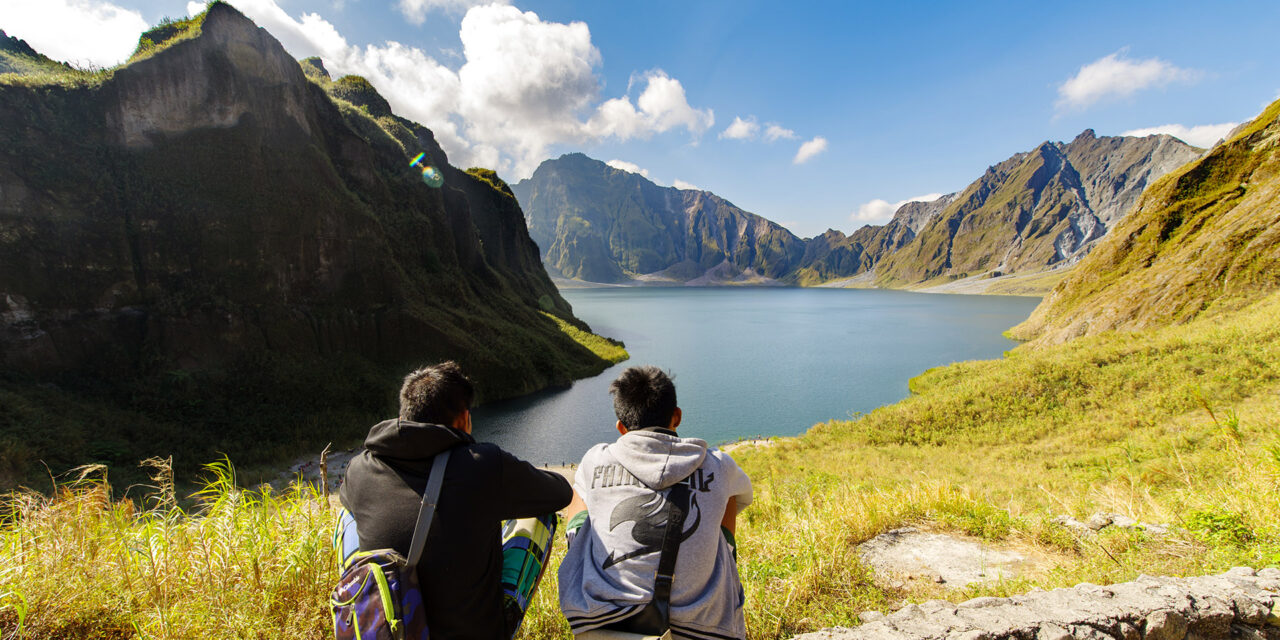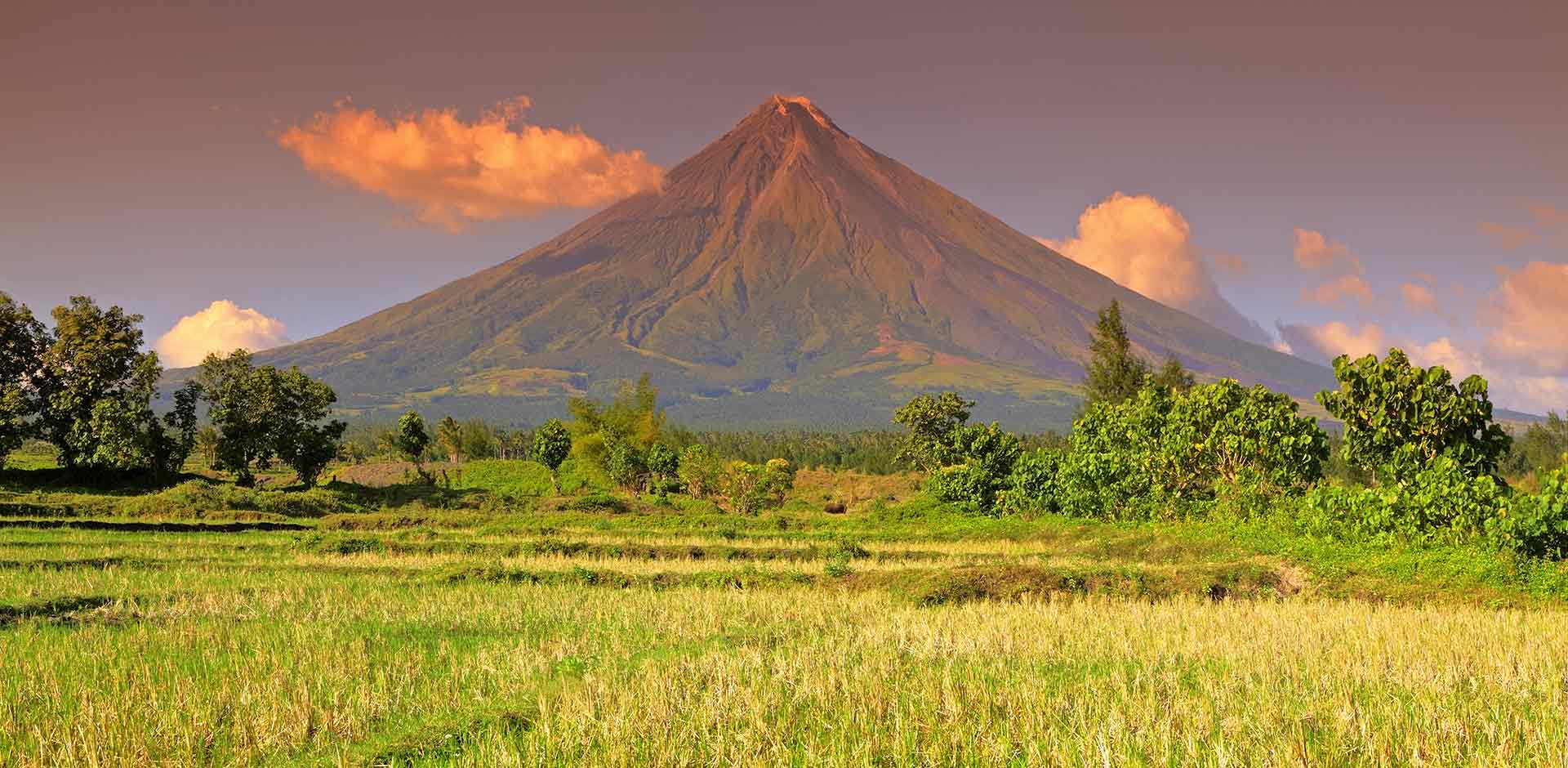It’s hard to turn down the beaches of the Philippines – be it the white sand and whale sharks of Cebu or the luxury resorts of Palawan – but for travelers hoping to inject a little excitement into their trip by putting some miles on their legs, Luzon has an answer. The largest island in the Philippines and featuring fantastic geological and cultural sites of interest, Luzon is the solution for hikers who want a little adventure with their paradise.
Pinatubo

Pinatubo is an active stratovolcano, the popular attraction here being the views over the crater lake. Located in Botolan, 80 miles from Manilla in the Cabusilan Mountains, it wasn’t recognized as an active volcano until it erupted in 1991. Before that, it was covered in dense forest inhabited by the Aetas indigenous people.
The drive from the capital takes two and a half hours before guests transfer to a 4×4 jeep through the Crow Valley. The climb to the top of Pinatubo takes approximately two hours. It’s an easy hike with only a few rocks and inclines but with some shallow pools to wade through. The best time to go is in dry season – October to May – and for hikers in a hurry there is an option that drives a little further into Crow Valley for a 30 minute hike.
Tinglayan, Kalinga

ABOVE: Tinglayan is made up of of 20 villages.
Tinglayan, south west of Tabuk, in the province of Kalinga is made up of of 20 villages (called Barangays) surrounded by lush rice paddies and mountains. Buscalan is one of the most popular villages, not just for its spectacular views, but also for being home to the oldest-living hand tap tattooist, Wang-od. They journey from Manila to Tabuk takes 10 to 11 hours, and then approximately four hours from Tabuk to Tinglayan via van, minibus, or jeep.

ABOVE: Hiker in Kalinga.
The hike takes around one and a half hours from drop off (Turning Point) to Buscalan and involves climbing down a steep cliff with no ropes. A reputable guide is both an asset and a requirement.
For a slightly easier hike, Tulgao 30 minutes away from Tinglayan town center has an impressive waterfall and natural hot spring for swimming.
Banaue

The Banaue rice terraces in Cordilleras are one of the most famous hiking destinations in the Philippines and are a UNESCO site. Built by the Ifugao people, the rice terraces date back over 2,000 years and are still functioning. The closest viewpoint over the rice terraces is a 45-minute walk from the center of town and makes for an easy hike. For more amazing views, hikers can head up to Batad village and the Awa View deck.
Another popular walk is to the Tappiya Waterfalls and large natural pool, a 30-minute hike from Batad. The weather is cool all year round but the rice terraces are at their greenest from May to November.
Echo Valley, Sagada

ABOVE: The hanging coffins of Sagada.
Echo valley – so-named for its, well, echoes – is the home of the famed hanging coffins. These coffins look as if they are floating on the cliff face, a chilling-yet-solemnly fascinating view. Next to the coffins are also chairs suspended on the cliff face; it’s said in local lore that the departed enter the afterlife on the chair. It’s an easy walk of about one and a half hours. There are tours on offer but it’s easy to find by heading out of the town towards St. Mary’s church and cemetery, and then it’s 20 to 25 mins walk to the hanging coffins from there. Because it’s such an easy walk, travelers are advised to leave early in the morning to avoid crowds.
There are also caves to explore with more coffins at the Lumiang and Sumaguing caves. A guide is definitely needed for this as it involves squeezing through cave tunnels, wading through water, and climbing.
Mt. Maculot

Located in the town of Cuenca in Batangas, Mount Maculot stands at 3,107 feet and attracts climbers and hikers due to its challenging hike and rewarding views over the photogenic Taal Lake. There’s also a campsite to use as a base for a few days to explore the three different hiking options: The Rockies, The Summit, and The Grotto. The Rockies is the most popular hike for its picture-perfect views over the lake.
A guide is required and it can take approximately one and a half hours to reach the campsite, then another 15 minutes to The Rockies. It’s a steep and rocky ascent but there are ropes to assist less experienced climbers.





